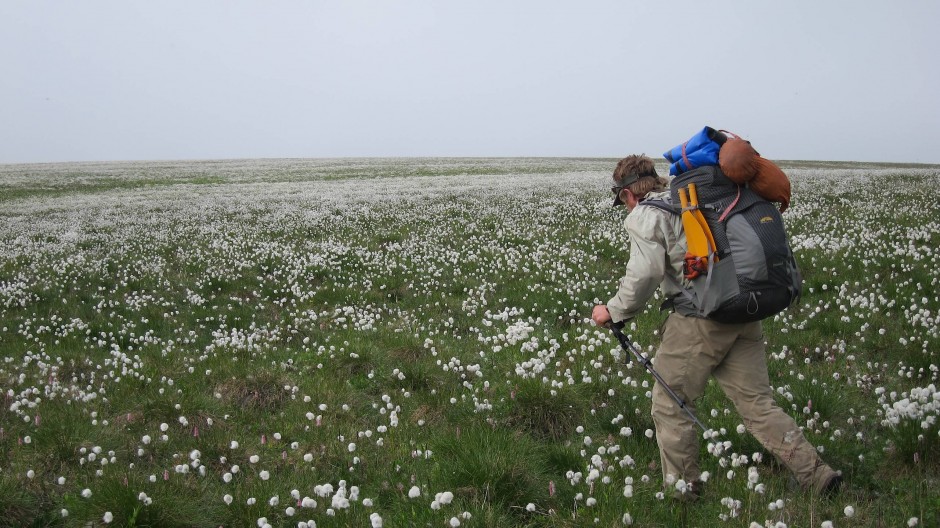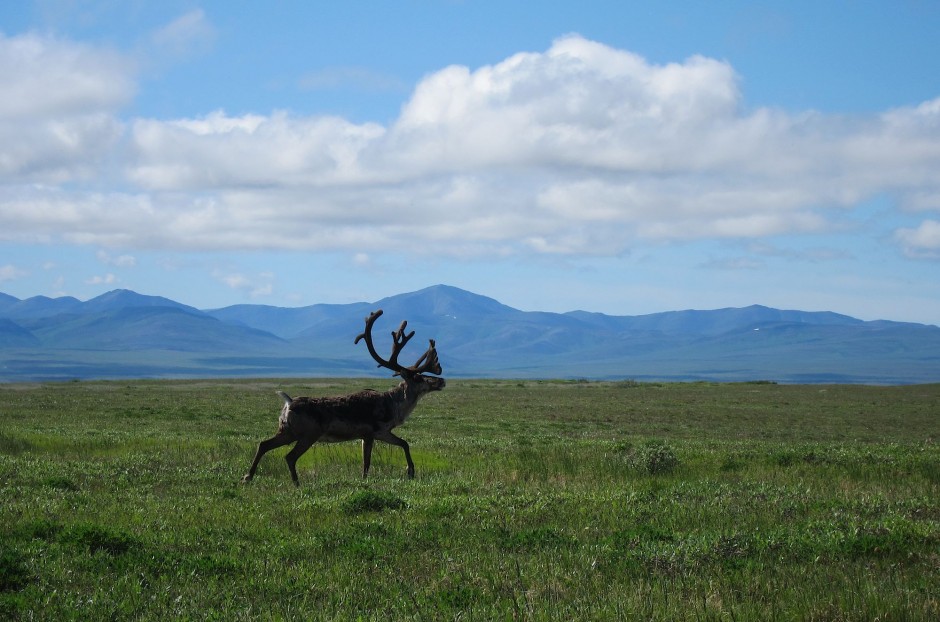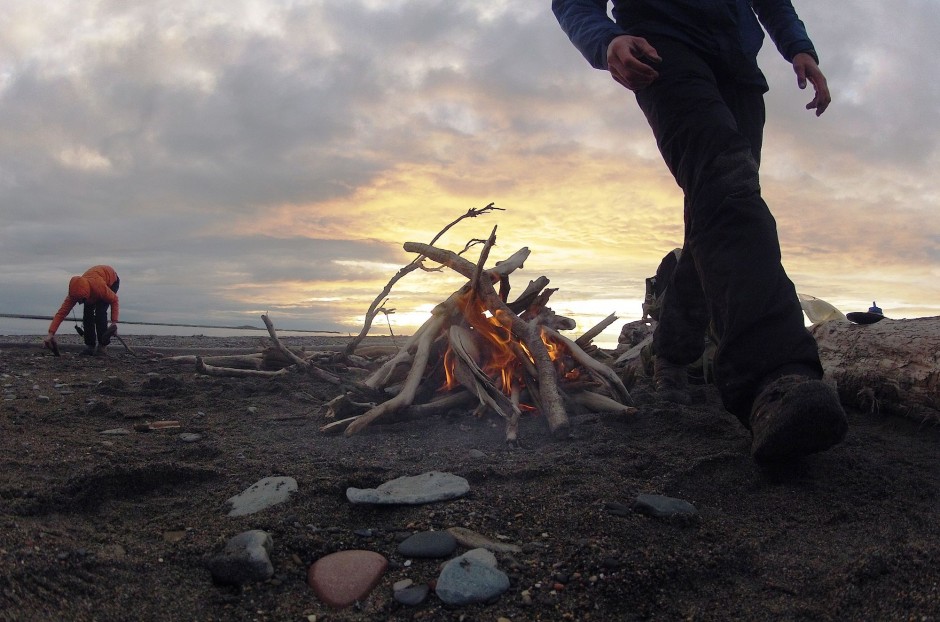In 2012, Caroline Van Hemert and Patrick Farrell traveled from Bellingham, Washington to Kotzebue, Alaska — a distance of nearly 4,000 miles — by rowboat, ski, packraft, foot, and canoe. This extraordinary journey followed a road-less, trail-less route through some of the most spectacular wild landscapes in North America. Along the way, Caroline and Patrick rowed the length of the Inside Passage, crossed the Coast Mountains on skis, hiked and packrafted the length of the Yukon Territory, paddled among icebergs of the Arctic Ocean, and traversed the Brooks Range. All in six months and all under human power.
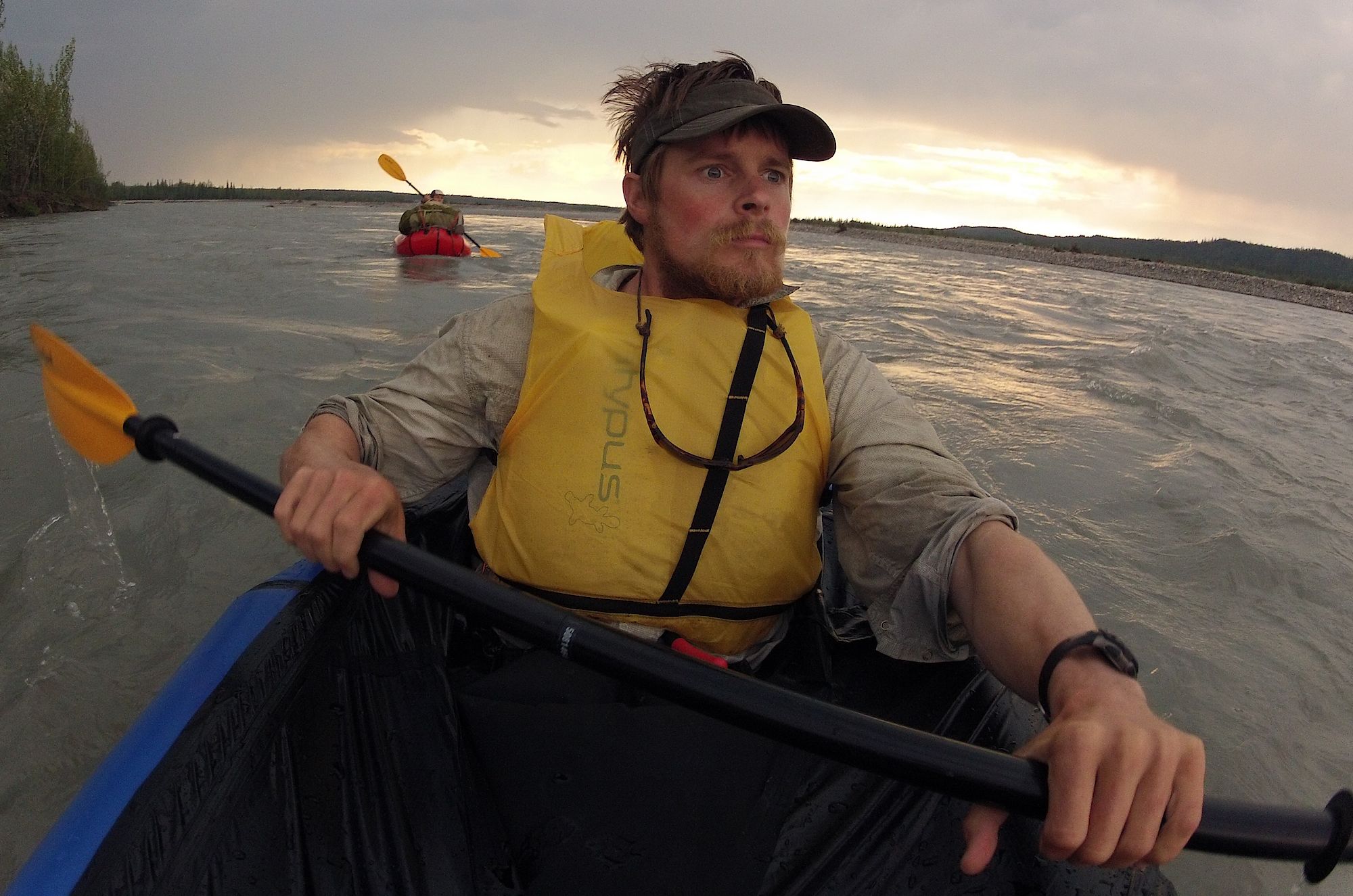

Northern Limits: A 4,000-Mile Human-Powered Journey Through Alaska
It’s 3am on July 10th and we have just landed our packrafts on the shore of the Arctic Ocean. In this land of 24-hour light, our internal body clocks seem to be following the rhythm of another planet. With no obvious variation in the angle of the sun, just a steady circling of the horizon, each day stretches longer than the last. We lose ourselves in the steady motion of footfall on sand or are hypnotized by the shape-shifting horizon. We feel pushed to keep moving, long past our conventional dinnertime and bedtime, dancing to the whims of the north.
We started our day 16 hours ago, though it feels like an entire week has passed. Today marked the end of a hellish slog through the Mackenzie Delta. We paddled through this brush-covered maze of sloughs and channels for nearly two weeks, fighting a headwind, mosquitoes, and our own waning sanity. In a giant arctic wetland in mid-July, we quickly learned that mosquitoes rule. We slept, ate, and relieved ourselves at their mercy. They clouded our vision, peppered our food, and laid in wait at the bottom of our sleeping bags until we fell asleep. They found their way down our shirts and up our pants, bit through our shoes, and drowned out the sounds of birds and running water with their steady whine. To savor the moments of relief in the tent, we didn’t bother cooking our breakfast and ate cold, partially re-hydrated oatmeal and choked down floating granules of instant coffee.
Along the way, beaten down by the misery, we abandoned any pretense of willpower. We were driven by desperation, pure and simple.
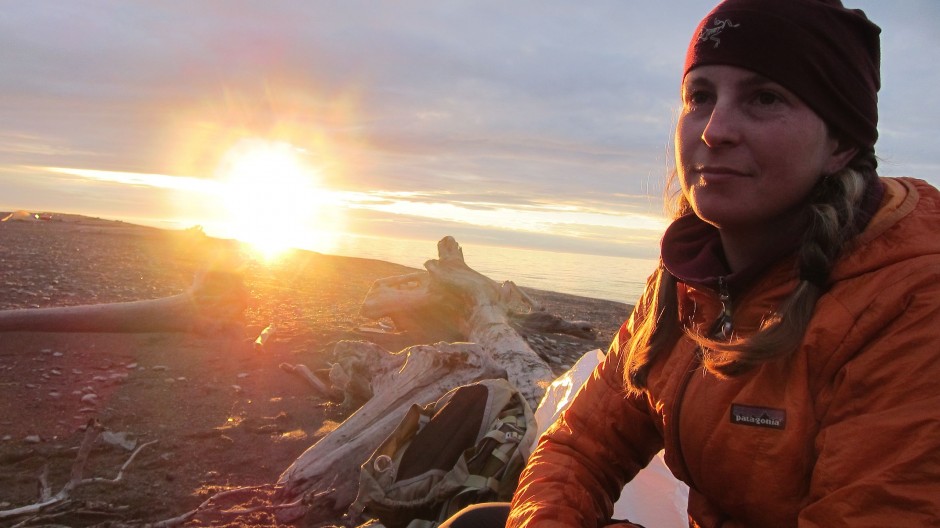
At the northern edge of the continent, Caroline Van Hemert enjoys a quiet moment under the midnight sun.
This wasn’t what we had in mind when we set out in March 2012 to travel nearly 7,000 kilometers by human power. We knew that our schedule would be ambitious — in order to make it in six months from Puget Sound to Northwestern Alaska by rowboat, ski, packraft, and foot, all without roads or trails, we needed to average more than 35 kilometers a day. But to think that, after rowing the length of the Inside Passage, crossing several mountain ranges, and enduring months of much more physically demanding activities, a bunch of buzzing insects and sticky mud could drive us to the lowest point of our journey…. We knew the Mackenzie Delta would be trouble. But we didn’t see any way around it. As part of our larger goal, we needed to get from the northern Yukon Territory to the Arctic Ocean. The massive Mackenzie River offered the most logical, if not the most pleasant, passage. We’d learned by now that accomplishing our goal sometimes meant sucking it up and enduring. This was one of those times. It just went on a lot longer than we’d hoped.
Eventually the bushes of the delta gave way to grass flats and, anxious to stretch our legs, we hopscotched along the inviting strips of land — walking when we could, then jumping into our rafts to cross the dozens of remaining ponds and sloughs. We practiced this in-and-out routine for hours, passing a large flock of molting, flightless white-fronted geese whose movements resembled our own. Paddle, waddle, paddle, waddle, and repeat.
By early evening, we had stumbled onto the end of land, where a low sod bank folded unceremoniously into the silty water. We looked at each other in disbelief. Could this really be it? Though it lacked any semblance of glory, reaching the Arctic Ocean felt equivalent to summiting a Himalayan peak. For the first time in weeks, the coastal breeze kept the mosquitoes at bay. We could breathe without inhaling a cloud of swarming insects or the mesh of our headnets. We could see again. The sky opened into a million shades of blue.
We noticed a string of white dots on the horizon. As we neared, the specks became swans, floating serenely in the still water. I spun in place, scanning the horizon, and began to count. Ten, twenty, sixty swans scattered across the flats. At our feet, a carpet of neon green grass and tiny saxifrage flowers that opened their five pink petals to the sky. The despair of the past weeks began to dissipate. More than 200 miles north of the Arctic Circle, we had reached our reward — a coastal haven flush with life, backed by an enormous sky — and I remembered why we’d come.
So focused on the rich details of the foreground, I only accidentally noticed a rounded brown hump several hundred meters away. As I lifted my binoculars to scan for birds, I passed over a driftwood log shadowed by characteristic furriness. In the low-angle sun, I couldn’t be certain what I was seeing. But then the hump moved. The bear was close. And big. And suddenly lumbering toward us. In the slow-motion haze that accompanies the first moments of panic, we realized something beyond our view must have spooked the bear, not us. In fact, it didn’t even seem to register that we were there. In its mad dash, it had barely looked up. So we found ourselves at the receiving end of a 400-kilogram animal’s sprint for survival. Somehow, in the span of less than a minute, we had gone from admiring flowers to facing down a grizzly.
Thankfully, once the bear spotted us, it apparently decided that it was not running away from danger, but toward it. As we watched it heave its massive body across the tundra and far out of sight, we began to breathe again.
We didn’t have long to contemplate the encounter, as an explosion of jet-black clouds billowed towards us. Lightning flashed across the sky, and we jumped when a resounding crack of thunder followed. The storm loomed huge above us, wrestling for its stake of the boundless sky — and apparently winning. The first dime-sized drops of cold water slapped our cheeks. Whitecaps frothed on the ocean surface. We made a hasty decision and raced to set up the tent next to the shelter of the same enormous driftwood log near where we had spotted the bear. For two hours we hunkered down, listened to pounding rain, and pressed our palms against the tent walls to buffer the fierce gusts. And, then, just like the bear, as quickly as it had arrived, the storm broke. We poked our heads out of the vestibule to see a glorious fresh world. The grasses shimmered with beads of water, the last streaks of lightning shared the horizon with the sun and the moon, and the ocean’s surface had stilled completely.
We crawled out of the tent, very ready for a meal. It was midnight and we hadn’t had anything to drink or eat for hours. Pat scouted for a place to make a fire as I dug a bag of pasta from my pack. I heard the surprise in his voice before he’d explained what he’d found. I walked over to where he was crouched and saw the object of his grumblings. A carcass, probably from a bearded seal, matted down in the tundra. There were fresh diggings all around it, the grass turned over, bits of decomposing flesh scattered about. We exchanged a glance. Darn. Time to pack up camp again. The bear that had nearly run into us earlier was likely feeding not on grass, as we had thought, but on this rotting carcass. Though the bear was nowhere to be seen, it could easily cover the same distance it had run, especially with an incentive like a smelly marine mammal.
So we packed up the tent, grabbed a quick snack, and inflated our rafts. I felt dazed as I squinted into the bright golden reflection of the midnight sun on the sea. Hungry and fatigued, the rhythmic motion of paddling lulled me into a near-stupor. But just after we rounded a small point, I happened upon another startling sight. Two large brown bodies materialized in front of us; even stranger, they appeared to be floating on the surface of the water more than a quarter mile offshore. I stared at the apparition, trying to avoid the brightest points of reflection that, even in the middle of the night, would blind me.
Between exaggerated blinks, the objects began to take shape. Broad chest, long nose, humped back and…antlers. Moose in the Arctic Ocean!
We worked our way around the wading moose, first trying the inside route near the shore and then backpedaling when they began to walk toward us. Being pursued by aggressive moose in the Beaufort Sea seemed like an unlikely hazard, but now, at the waning edge of a very strange day, we were willing to believe that anything might be possible. And it was. To our disbelief, the pair waded and then swam determinedly after us for nearly a mile. We managed to paddle hard and stay just ahead of their advances, growing increasingly wary as we looked over our shoulders at the antlers bobbing above the surface. Later, we decided that they were probably just curious — our presence was undoubtedly a much-rarer occurrence than theirs. But at the time, passing through a world that felt very unlike our own, we weren’t taking any chances.
After surviving our first introduction to the Arctic coast, we are finally ready to call it a day. Dragging our boats behind us across the tundra, we search for signs of fresh water. I find a pool that looks promising, only a few floating insects among the slime, and I cup my hands for a drink. It tastes bad, but not brackish. At least I don’t think so. At this point, dehydrated and exhausted, we are willing to settle for just about anything. We drop our packs, hurriedly set up camp, and coerce a few muddy sticks into flame. Collapsing onto the moist ground, we devour a pot of smoke-flavored pasta and squint into the low-angle sun. Pat points out a glaucous gull perched on a driftwood log a few hundred feet away. He tells me it’s a giant satellite dish from one of the Cold War-era Distant Early Warning (DEW) Line sites. I look over to see if he’s joking. He’s not. Just about anywhere else in the world, I would be concerned by his response. But instead, I point out the now-airborne gull and laugh. This is the visual lie of the arctic. Nothing is ever as it appears.
As we lean back against a driftwood log in a landscape devoid of trees and gaze out at a sky curved under its own enormity, it seems entirely possible that we’ve reached the end of the earth.
